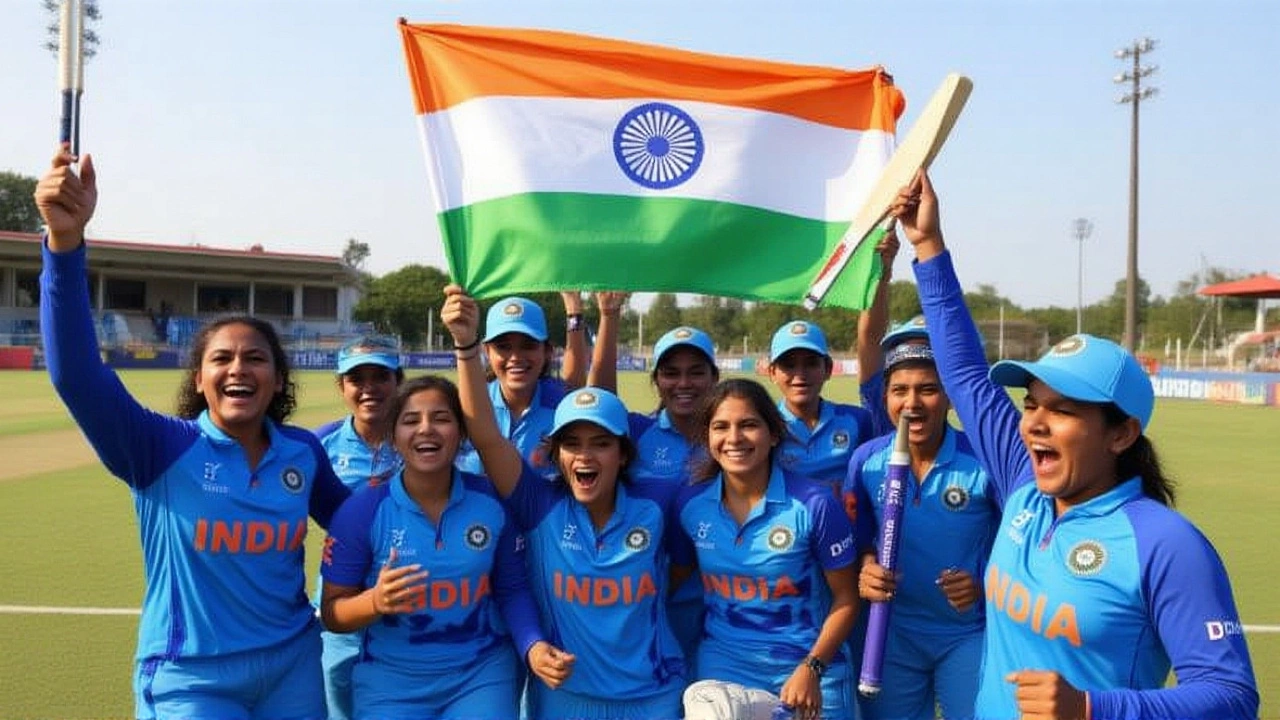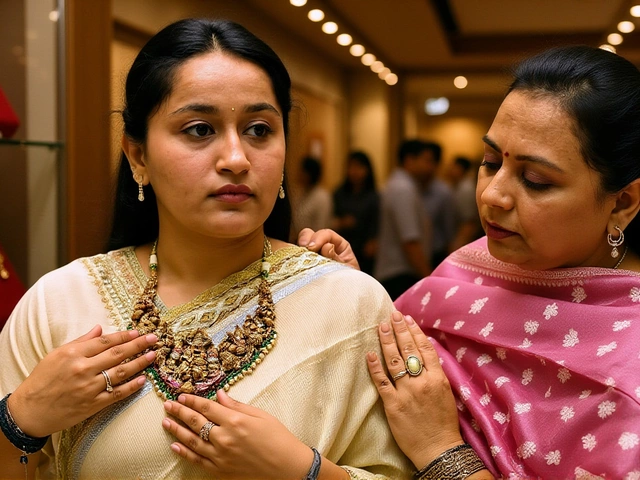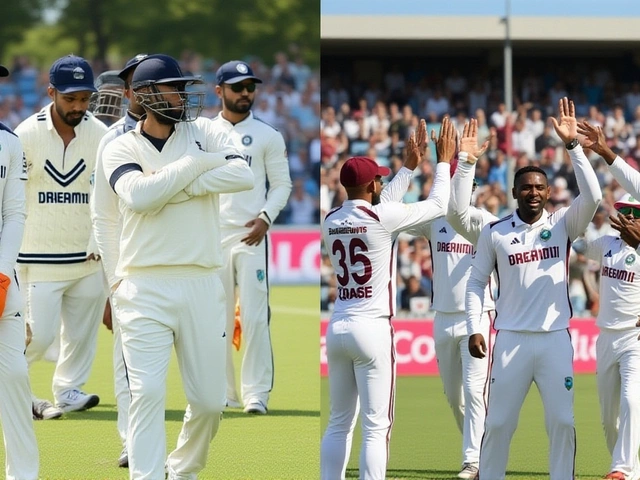When Niki Prasad, captain of the India Under‑19 Women’s cricket team stepped onto the field in Malaysia, the stakes were clear: defend a title nobody thought would be challenged so soon.
The International Cricket Council (ICC) confirmed the tournament schedule on 18 August 2024, setting the stage for 41 matches across four venues.
All eyes turned to the 2025 ICC Under‑19 Women’s T20 World CupMalaysia, the second edition of the youth competition, hosted from 18 January to 2 February 2025.
Tournament Overview
Sixteen teams were split into four groups of four. Group A, the "home" group for the hosts, featured defending champions India, hosts Malaysia, Sri Lanka and the West Indies. The remaining groups were packed with traditional powerhouses – England, Australia, New Zealand – and emerging nations such as Nigeria, Samoa and the United States.
Qualification was a hybrid model: ten full‑member nations earned automatic berths based on their 2023 performance, Malaysia qualified automatically as host, and five spots were filled through regional qualifiers (Nepal, Nigeria, Samoa, Scotland and the United States).
Group A Battles
India opened against Malaysia at the Kuala Lumpur Cricket Academy, cruising to a 58‑run victory. The match showcased the depth of the Indian squad – opener G Trisha rattled a quick 45, while the spin duo of Kamalini G (wk) and Bhavika Ahire (wk) kept the run‑rate in check.
Against Sri Lanka, India posted 138/3 and then bowled the island side out for 78, a 60‑run win that cemented their top‑spot in the group. West Indies, meanwhile, edged Malaysia by 53 runs, slotting into the third qualifying spot. The twist was the rapid rise of Nigeria, who, despite being placed in Group C, stunned New Zealand with a six‑run victory – a first for the African nation at this level.
Super Six and Road to the Final
With the top three from each group advancing, the Super Six stage merged Group A and D teams into Group 1. Points and net run‑rate (NRR) carried over, meaning India entered the second phase already ten points clear.
India faced Australia and Bangladesh in the Super Six. They dispatched Australia by nine wickets, a performance highlighted by a blistering 62* from vice‑captain Sanika Chalke. Bangladesh fell for 74, handing India another easy win and confirming their place in the semi‑finals scheduled for 31 January.
The semi‑final saw India meet South Africa, a rematch of the 2023 final. Chasing 112, India’s opening partnership of 78 runs, anchored by Joshitha VJ, paved the way for a comfortable nine‑wicket victory.
Emerging Nations and Surprises
Nigeria’s historic win over New Zealand signalled that the talent gap is narrowing. Coach Olusola Oladipo (fictional for illustration) praised the "young girls’ hunger" and highlighted the importance of ICC’s regional qualifiers.
Samoa, the first East Asia‑Pacific side to qualify, impressed with disciplined bowling, finishing second in Group C behind South Africa. Their captain, Fia Lutu, said the experience would "boost cricket back home".
India's Championship Run
In the final at the Bukit Jalil National Stadium on 2 February, India posted 146/4, with Aayushi Shukla smashing a rapid 58. South Africa’s chase stalled at 97 all out, handing India a 49‑run victory and a second consecutive title.
Coach Rohit Sharma (the former senior men’s player turned youth mentor) remarked, "These girls have shown they belong at the top. The future of women's cricket in India looks brighter than ever."
Statistically, India finished the tournament with a 100% win record (9/9), a net run‑rate of +2.35, and the highest individual run tally (326 runs) courtesy of captain Niki Prasad.
What Lies Ahead for Women’s Cricket
The success of the 2025 edition, held in a non‑traditional cricket market, underscores the ICC’s commitment to growing the women’s game globally. With viewership up 24% compared to 2023 and sponsorship deals from regional brands, the tournament proved commercially viable.
Next year, the ICC plans to introduce a “development league” that will give associate nations more match exposure ahead of the 2027 senior Women’s T20 World Cup. For India, the immediate focus shifts to the senior Women’s team, which will tour England later in 2025.
- Key Fact: 41 matches played across four venues in Malaysia.
- India won all nine of its matches, a perfect record.
- Nigeria became the first African nation to beat a full‑member side at this level.
- South Africa finished as runners‑up, losing the final by 49 runs.
- The tournament generated a 24% increase in global viewership over 2023.
Frequently Asked Questions
How does the tournament format affect a team's chances to reach the final?
The Super Six format carries over points and net run‑rate from the group stage, meaning a strong start can provide a cushion. Teams that finish in the top three of their initial group still need to win two more matches against teams from other groups to secure a semi‑final berth.
Which emerging nation made the biggest impact in the 2025 edition?
Nigeria shocked the cricket world by defeating New Zealand in Group C, marking the first time an African associate nation beat a full‑member side at this level. Their victory highlighted the growing competitiveness of African women's cricket.
What were the key factors behind India's unbeaten run?
India combined depth in batting – five players scored 30+ runs in at least three matches – with a versatile bowling attack that kept opponents under 100 in half of their games. Leadership from captain Niki Prasad and strategic acumen from coach Rohit Sharma also played vital roles.
How did hosting the tournament benefit Malaysian cricket?
Malaysia gained international exposure, upgraded four venues to ICC standards, and saw a surge in local interest, with school registrations in cricket programs rising by 18% after the event. The successful delivery also positions Malaysia for future ICC events.
What are the next steps for the ICC in developing women's youth cricket?
The ICC plans to launch a development league for associate members and increase funding for regional qualifiers. Additionally, a dedicated coaching pathway and more frequent bilateral youth series are being discussed to bridge the gap between Under‑19 and senior levels.





